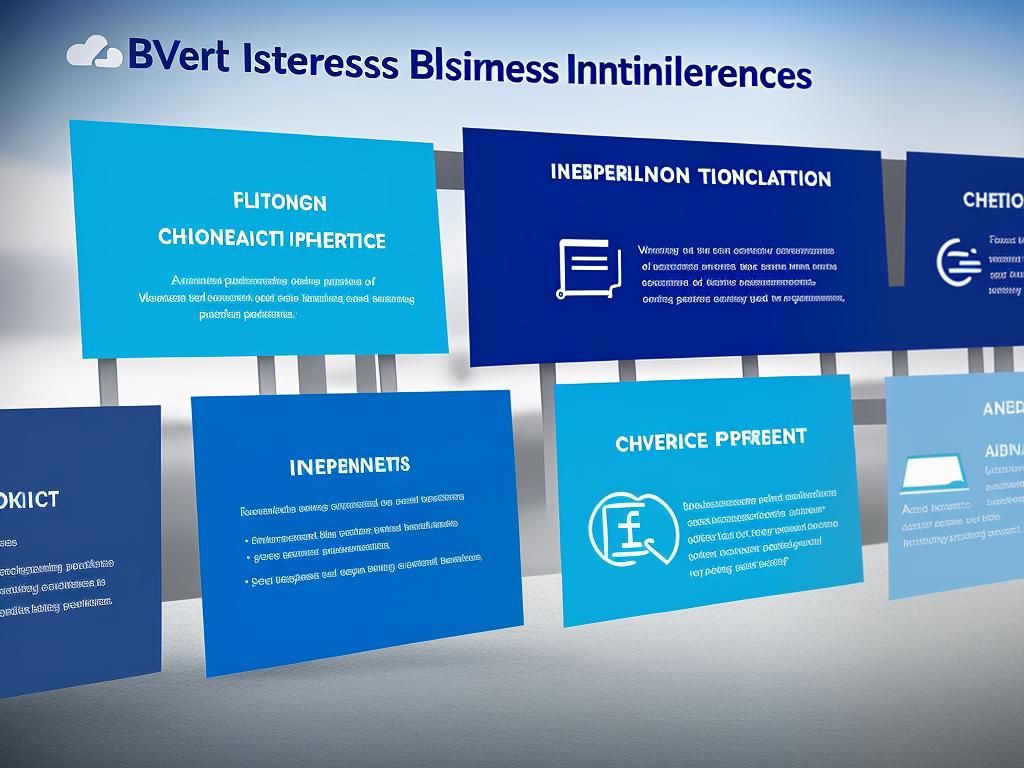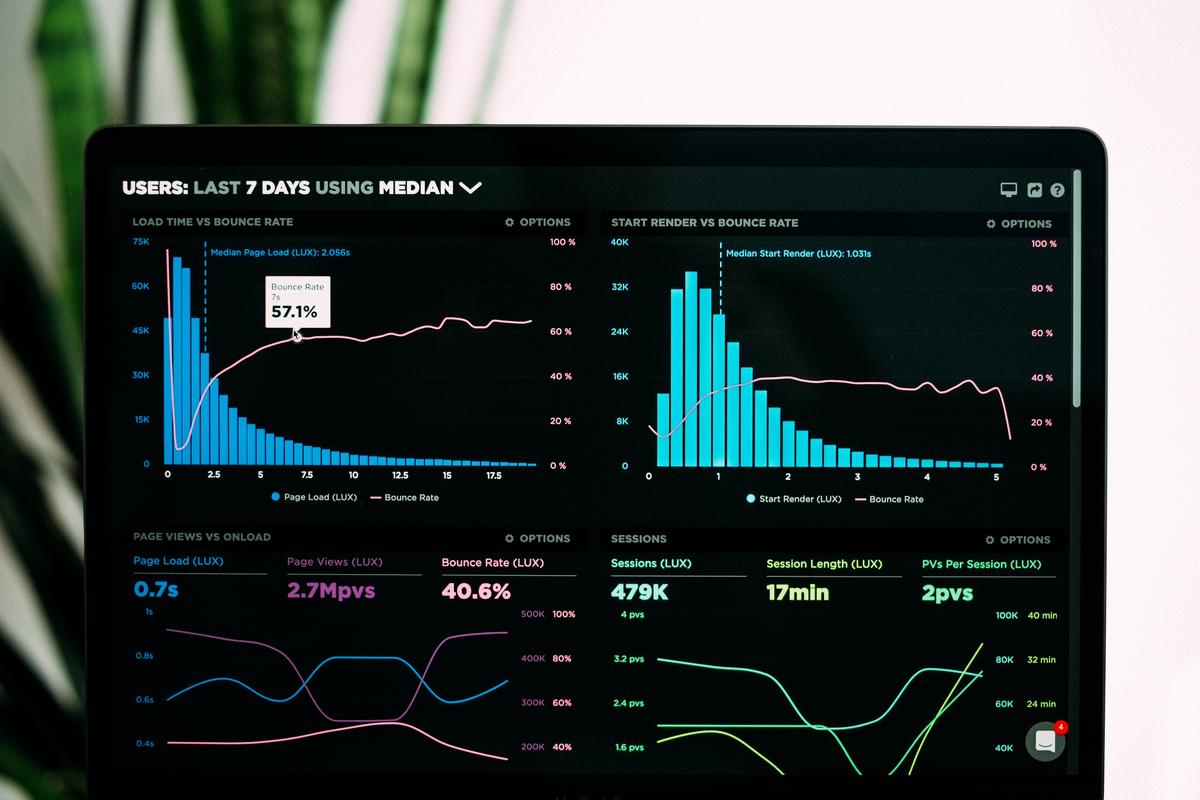Business Intelligence (BI), as an integral part of modern businesses, has the potential to alter the ways companies operate, decision-making methods, and even their competitive stance in the industry. Understanding the intrinsic process of BI is germane to both grasping its value and implementing it effectively within a business framework. The progression from data collection to performance management, the diversity of benefits, hurdles faced during implementation, and the impact of emerging trends such as Artificial Intelligence and cloud-based tools–all these aspects are vital in fully appreciating the realm of Business Intelligence. Our aim here is to dissect these elements, offering readers a comprehensive understanding of the BI process, its impacts, and its future.
Understanding Business Intelligence (BI) Process
Understanding Business Intelligence
Business Intelligence (BI) refers to the technologies, applications, and practices that are used to collect, integrate, analyze, and present business information. BI helps facilitate decision making by offering valuable insights into the current status of an organization and predicting future performance. It analyzes raw data from various business activities and converts it into meaningful information that can help business managers, corporate executives, and other end users make better, more informed decisions.
BI is crucial in the modern business world due to the vast amount of data generated by businesses. It helps condense large volumes of unstructured data into actionable information that provides insights about an organization’s strengths, weaknesses, opportunities, and threats. These insights enable businesses to adopt strategies that work in their favor and eliminate those that hinder their growth.
Stages of Business Intelligence Process
-
Data Collection: This is the first step in the BI process, where data is gathered from various sources. Sources can include both internal systems, like ERP or CRM, and external databases or spreadsheets.
-
Data Cleansing: Following data collection is the cleansing stage, where this data is checked for inconsistencies, duplicates, errors, or missing values and corrected. This step is essential for maintaining the accuracy and reliability of the data.
-
Data Integration: This stage involves merging data from different sources into a unified view. This helps in providing a cohesive picture of the whole organization.
-
Data Analysis: The cleaned and integrated data is then analyzed to extract insights. This can involve the use of statistical models, predictive analytics, data mining, or other methodologies.
-
Report Generation: After the analysis, reports are generated that highlight the findings. These reports visualize data through charts, graphs, and other performance metrics.
-
Decision-making: The final stage involves using the information and analysis derived from the reports to aid in decision making.
Tools used in BI
- Data Warehouses – These aggregate structured data from disparate sources and make it available for analysis.
- Data Discovery tools – These allow users to search for specific information in a large dataset.
- Dashboards – They provide visualizations of data that are easy to understand and interpret.
- Reporting tools – These are software applications that allow you to extract, format, and present data.
- Predictive Analytics Tools – These use data mining, machine learning, and statistical modeling to predict future events based on historical data.
Understanding and properly applying a Business Intelligence process can significantly strengthen an organization’s capacity to review and comprehend data, allowing for well-informed decision making. This is often the catalyst for increased growth, productivity, and competitive advantage in the intricate world of modern business.

Stages of Business Intelligence Process
Phase One: Data Collection
The Business Intelligence process kicks off with data collection. This important initial phase involves companies amassing essential information from a variety of internal and external venues. The internal data usually springs from databases and data produced by daily business operations or activities—like transactions and interactions. External data can take the form of market research findings, social media stimuli, or documented facts from government entities. Adhering to meticulous data collection strategies ensures businesses harvest accurate, high-quality data, providing a solid foundation for credible business intelligence results.
Data Storage
Once data is collected, it moves on to the data storage phase. Storing and organizing data appropriately is an essential part of the business intelligence process, making it easier to manage and analyze large volumes of data. This phase typically involves saving data in databases or data warehouses. Data can be stored on-premise or in the cloud, depending on the needs and resources of the organization. Furthermore, data must be standardized and cleaned during this phase to eliminate defects and ensure consistency, thus improving the accuracy of future analyses.
Data Analysis
Next in the line is data analysis, a critical stage in the BI process. At this stage, companies employ various analytical tools and techniques to process, examine, and interpret the stored data. This might include statistical analysis, data mining, predictive modeling, or machine learning algorithms. The goal is to extract valuable insights from the data that can fuel decision-making processes. The information gained through data analysis can help businesses identify trends, detect anomalies, understand their customer base, improve operations, forecast future trends, and make data-driven decisions.
Performance Management
Lastly, the performance management stage is all about measuring and monitoring the performance of business operations based on insights gained from data analysis. This includes setting benchmarks, tracking progress towards business goals, identifying inefficiencies, and implementing improvements based on data-driven insights. Effective performance management helps businesses stay competitive, make strategic adjustments as needed, and monitor the outcomes of these changes.
The stages of collecting, storing, analyzing, and utilizing data are essential components of any business intelligence process. This process enables businesses to harness relevant data, analyze it rigorously, and apply the gained insights for improved performance management. The successful implementation of the process can foster data-driven decision-making, enhanced competitiveness, and optimization of operations within the organization.

Benefits and Challenges of Business Intelligence Process
Understanding the Perks of Business Intelligence Implementation
Significantly, implementing Business Intelligence (BI) benefits decision-making processes immensely. Attuned BI tools curate and scrutinize large data sets, providing insights that facilitate informed decisions across different business sectors. A case in point is Dell Technologies, which leverages its BI system to mine and interpret data from varying sources. This enhances its understanding of customer behavior and aids the provision of personalized services.
Equally, a considerable advantage of BI is the amplification of operational efficiency. BI tools streamline the data analysis process, thus minimizing manual efforts and freeing up employee time resources. Consequently, staff can direct their focus towards other crucial assignments. For instance, McDonald’s employs BI to refine its menu and supply chain, drawing from the analysis of customers’ preferences and sales data.
Challenges of implementing Business Intelligence Process
Despite its many benefits, integrating a BI process can present various challenges. A significant hindrance is the high cost of implementation. BI software and hardware, coupled with the cost of training employees, can be expensive. Small and medium-sized enterprises (SMEs) may find it particularly challenging to afford these costs.
Data privacy and security concerns can also pose challenges. With BI tools handling large volumes of data, there is an increased risk of data breaches. Companies like Equifax have experienced significant data breaches in the past, demonstrating the risk involved.
Data quality issues can also hamper the effectiveness of a BI process. If the data fed into a BI tool is incorrect or of poor quality, the output will also be inaccurate, leading to potentially detrimental business decisions.
Real-world examples of Business Intelligence Process
There are numerous real-world examples highlighting the successful implementation of a BI process. Starbucks, for instance, uses BI to analyze customer behavior and sales data, informing their decisions on what types of coffee to offer and where to open new stores.
Meanwhile, American Express uses BI to analyze transaction data for identifying potential fraudulent activities. This proactive approach helps Amex protect its clients and maintain a high level of trust in their brand.
At the same time, various companies have faced challenges with their BI processes. The rollout of a new BI system at Hershey’s led to significant order fulfillment problems. This notorious BI failure contributed to a 19% drop in the company’s third-quarter earnings.
Having concluded that a Business Intelligence (BI) process carries with it significant advantages such as streamlined decision-making and ramped-up operational efficiency, it’s equally crucial to be cognizant of the potential hurdles. These could range from elevated costs and concerns over data privacy to data quality issues. By examining case studies like those of Dell Technologies or Hershey’s, one can evaluate the range of impacts, both beneficial and adverse, that BI process can have on businesses.

Photo by lukechesser on Unsplash
Emerging Trends in Business Intelligence and Their Impact on BI Process
Modern Developments in Business Intelligence
In the current scenario, several notable trends are steering the direction of business intelligence (BI). Some of these are the expanding application of machine learning and artificial intelligence (AI), a rising focus on visual analytics, and a growing traction of cloud-supported BI tools.
Machine Learning and AI in BI
Machine learning and AI are playing a more significant role in BI and data analysis. They are being used to automate data preparation, predictive analysis, and business analytics. With AI, vast amounts of data can be processed quickly and accurately, providing businesses with valuable insights that improve decision-making. Machine learning algorithms can detect patterns in data and make predictions based on these patterns, which are often beyond the capacity of humans to discern.
Moreover, AI and machine learning are influencing the automation of BI. They allow for alert systems that can notify the relevant parties about sudden changes or anomalies in real-time. This automation improves the efficiency and responsiveness of the business intelligence process.
Visual Analytics
Another trend reshaping business intelligence is the rise of visual analytics. Visual analytics enable users to see patterns, trends, and correlations that might go unnoticed in traditional reports, enhancing the understanding of complex datasets. Interactive dashboards or data visualization tools can transform data into visually engaging insights that are easy to understand, thus improving data literacy among a broader range of users.
Cloud-Based BI Tools
Cloud-based BI tools are increasing in popularity due to their scalability and cost-effectiveness. By hosting BI tools in the cloud, organizations can reduce the need for expensive hardware and IT maintenance. Cloud-based solutions also allow for greater flexibility and accessibility since users can access data and BI tools from anywhere, at any time. Furthermore, cloud-based platforms foster collaboration, as everyone has access to the same real-time data and analysis.
The Impact of Emerging Trends on BI Process
These emerging trends are impacting the BI process in several ways. Firstly, they are making data more accessible and understandable to non-technical business users, promoting data-driven decision-making across all levels of an organization.
Secondly, they are fostering a more proactive approach to data analysis. For example, machine learning and AI can identify trends and patterns, predict future outcomes, and issue alerts about anomalies or significant changes, facilitating early intervention and timely decision-making.
Last but not least, these trends are improving the efficiency of the BI process. Automation, enabled by AI and machine learning, is reducing the manual labor involved in data preparation and analysis. Similarly, cloud-based BI tools are minimizing the need for costly hardware and IT infrastructure.
Overall Outlook
Overall, these emerging trends are bringing significant changes to the BI process and are expected to continue doing so in the foreseeable future. As these trends develop further, the BI process will become more intelligent, agile, and efficient.

Embracing the concept of Business Intelligence and its processes implies acknowledging the pivotal role of accurate data, their analysis, and informed decision-making in the success of modern businesses. Rapid advancements in technology such as machine learning and Artificial Intelligence are not only reformulating BI, but also augmenting its potential. These tools and methodologies, despite the challenges they bring, serve as indispensable instruments for organizations aiming to stay resilient and competitive in an ever-evolving marketplace. The future of BI is exciting and it is essential for us to grapple with its dynamism and multiplicity, to effectively harness the potential it offers.

Leave a Reply